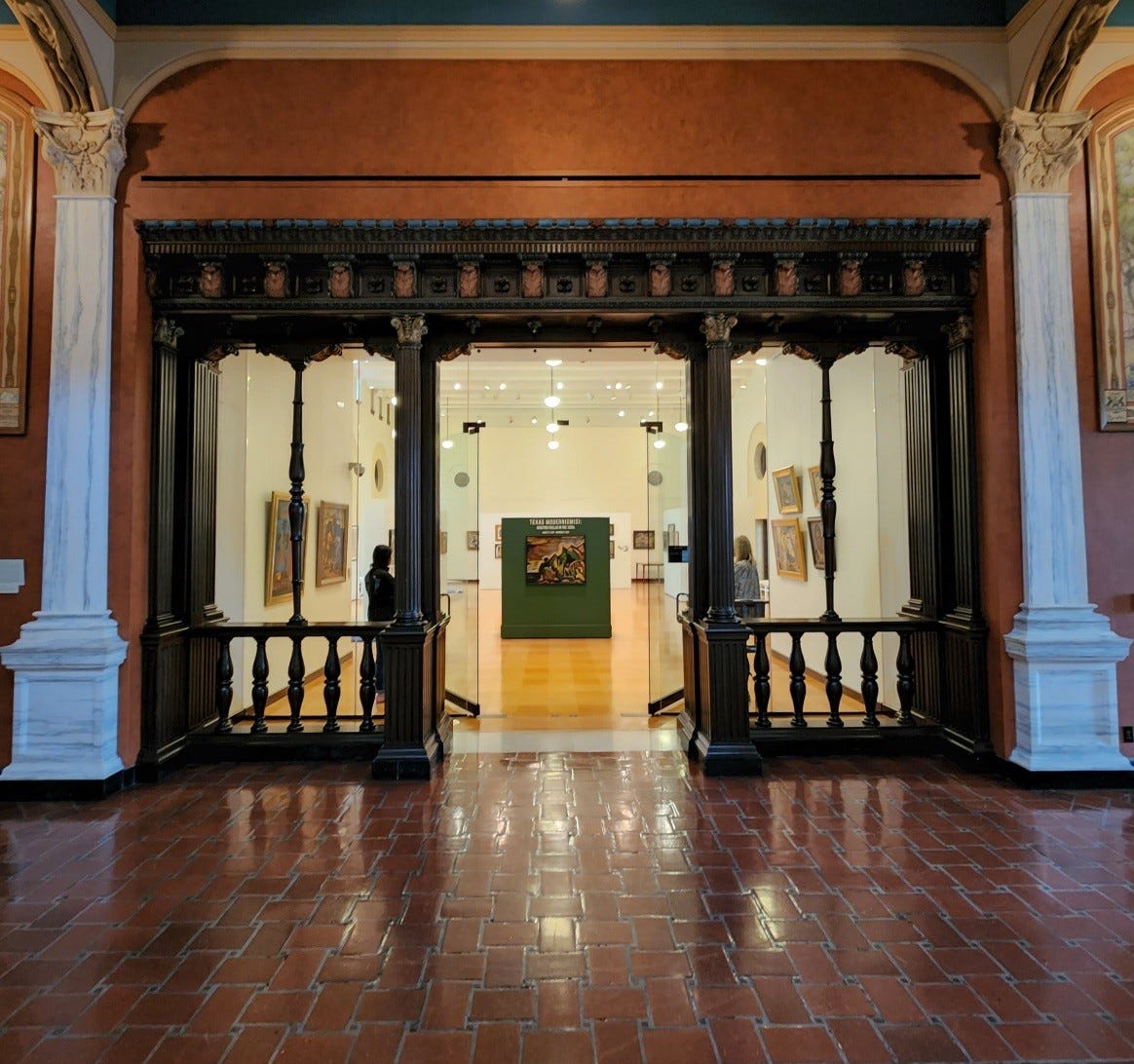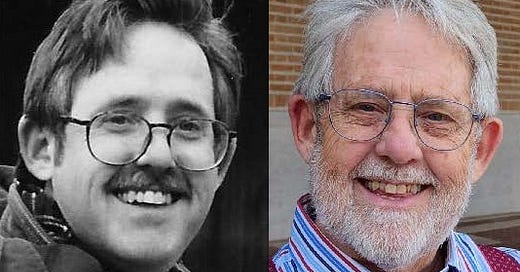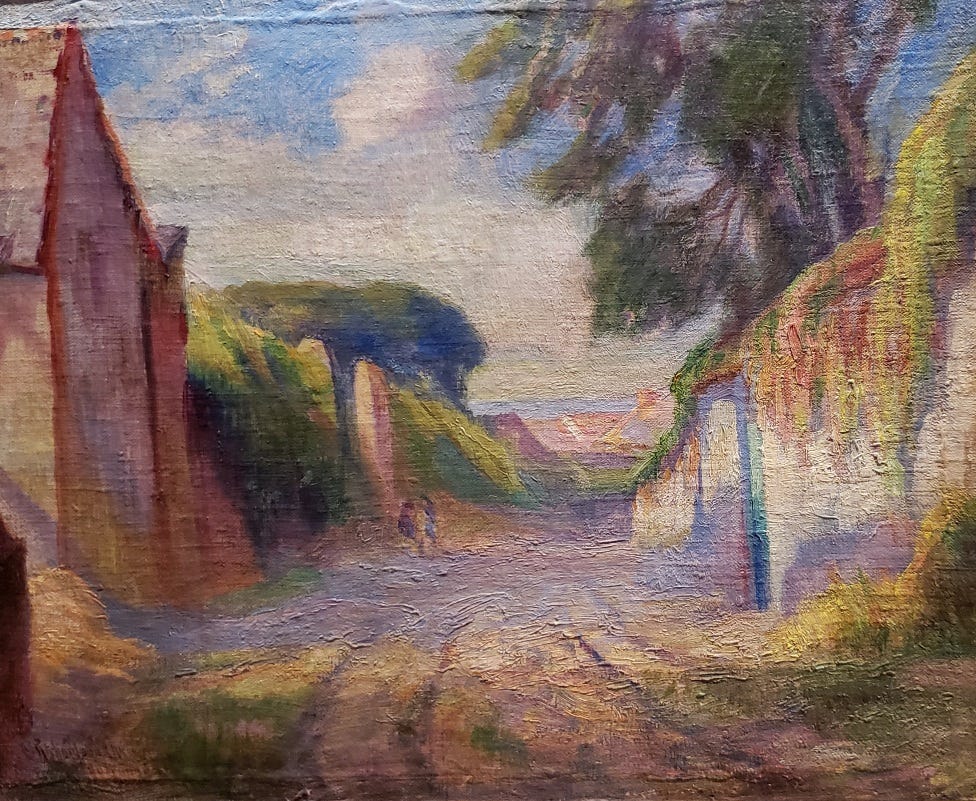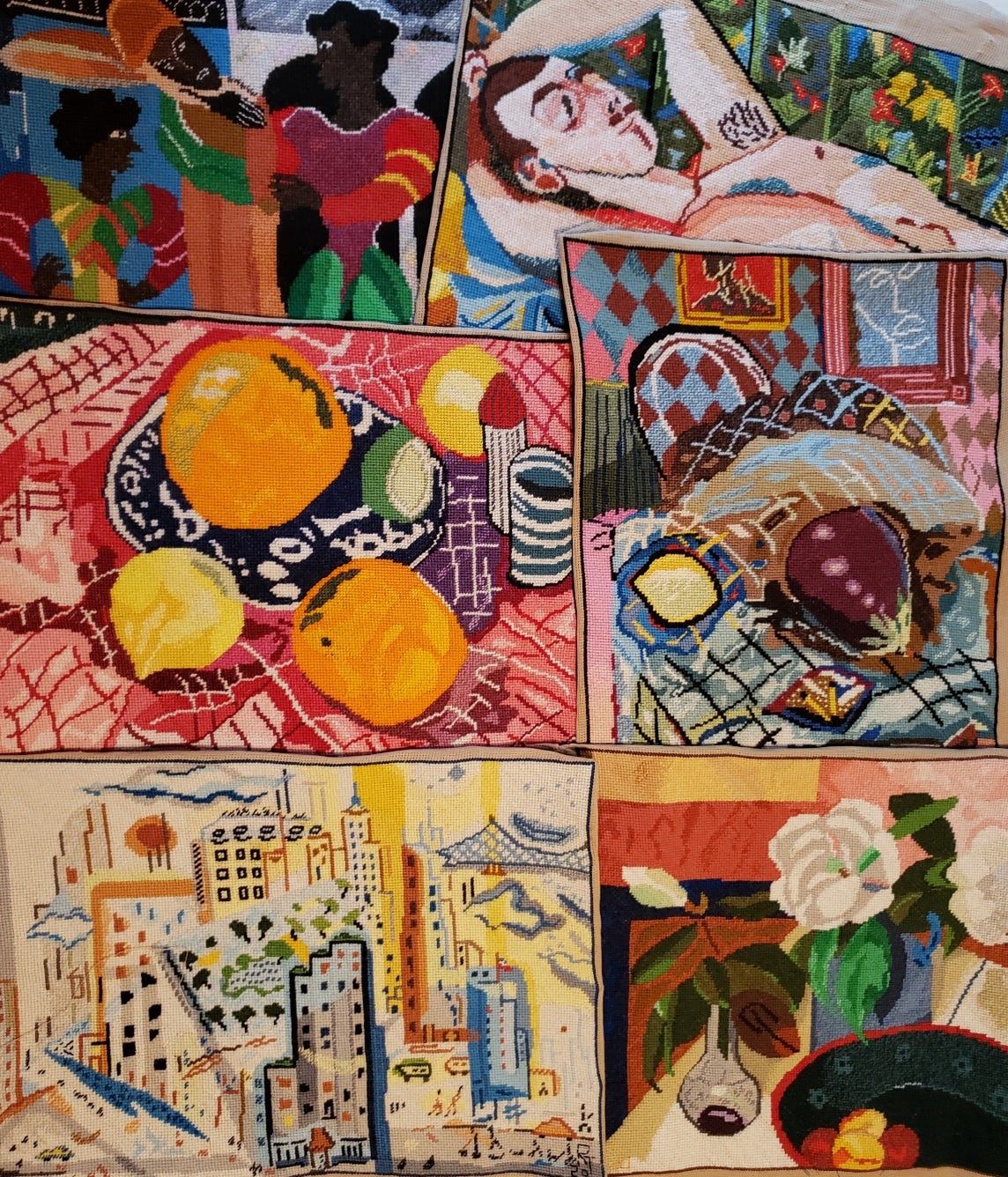“Get over here quick,” I said as soon as he picked up the receiver at his end.
“The old guy next door – the creepy one who was always looking at me at Habs House – died – sitting in the lobby for fuck’s sake – so his apartment is available – the two bedroom next to me. If you two get it, we’ll have our own little ménage here in the Hawthorne – like nothing the old maids – and old bachelors – have ever seen before. So get over here!”
And so the story may – or may not – continue …
Some of you “Randy Readers” (I borrow the term coined by one of you, which always makes my heart sing when I think of it; thank you, Kathy) may have noticed that my last post, HOW THE BIG STORY ENDS, brings my historical novel of a queer life in the first three quarters of the 20th Century to an end. I left the ending ambiguous on purpose, just in case. It’s so hard to let go.
But my thinking now is that that saga, which is three related novellas (Song of the Amorous Frogs, Left Bank on the Bayou, and An Old Man and His Memories), published in parts on Substack over the last year and a half, has come to an end.
I sent out the first part of Song in November, 2023, but the writing started long before that – started years earlier when I first heard the screeching frog song of the title one morning as my husband and editor extraordinaire, Rick, and I walked through the Jardin des Plantes, in Paris. Along with the ear-splitting song, we also heard the elegant grand-mère delicately explaining its significance to her petite fille, as described in that opening part. I knew in a flash that someday I’d have to make something from the sound and the scene – and now, years later, I have.
The three novellas together have grown to 75,000 words. OMG, that’s a novel! I never thought I could write one. And yet (another favorite phrase of mine), here it is.
The novellas make a sort of prequel to the pieces set in a gay life in the 70s, that I’ve gathered in the SAINT LOUIS BLUES section of my Substack space, (and the many others not included there for fear they may be a bit too earthy). All that fiction goes along with the memoir pieces in SCENES OF A LIFE I THINK WAS MINE, the only ones that are NOT fiction - though even memoir may not always remember the facts exactly as they were.
Altogether, the result of a three-year writing burst - the most productive writing period of my life - coming here toward the end of that life. (Hey, I’m not being morbid; I’m mid-70s; let’s be real!) I try to resist asking the question, "Why didn't you do this earlier?" For whatever reasons, I guess it just wasn't the time then. At least I've done it now. Better late than never.
And so, what next? I suppose it might be time to pause a moment and ponder that. I don’t think I’m quite finished yet.
I have an idea for what I believe could be a lovely journey with our dear Mrs. Cherry (Houston artist Emma Richardson Cherry, 1859-1954) through Brittany, the Loire and Paris, a hundred years ago this year.
I’ve stitched some new pieces since my last Needlepoint Musing.
I might set into some more table settings, which kept me going through empty-table COVID.
With continued clean living, or more likely luck, I may even get to take at least one more trip to Paris, and write about it, of course, as I did about my first trip, 50 years ago and the one just last month.
And, God knows, there’s enough going on in the world these days to prompt plenty of REFLECTIONS. I have the feeling that I may not even be finished with fiction, which, on the good days, treated me to some of the best days I’ve ever had.
And there’s another exhibition of Houston art on the horizon: THE FABULOUS FIFTIES: HOUSTON ART AT THE DAWN OF THE SPACE AGE, 1945-1961, slated for August 2025 in the Ideson Gallery of Houston Public Library. That should keep me busy, and make for some Substack pieces too.

For now, however, maybe a pause – of a day or two, or a week or two – who knows?
But just to be sure there’s something to keep the pump primed (those of you who have followed the novellas will know where this is coming from):
“Get over here quick,” I said as soon as he picked up the receiver at his end.“The old guy next door – the creepy one who was always looking at me at Habs House – died – sitting in the lobby for fuck’s sake – so his apartment is available – the two bedroom next to me. If you two get it, we’ll have our own little ménage here in the Hawthorne – like nothing the old maids – and old bachelors – have ever seen before. So get over here!”That was the way you got an apartment in the Hawthorne, an almost elegant survivor from the Roaring 1920s, trending more and more queer in the Sexy 70s, as the Central West End of St. Louis turned into the out & proud gayborhood of the city. You got it by rushing to the manager’s office with your application and deposit check in hand, as soon as you heard that one of those old maids or bachelors had dropped dead, almost before the hearse pulled away. It helped to know someone who lived in the building, who might even get a glimpse of the corpse before word spread through the neighborhood – as it always did, like lightning.And so I called my “friends with benefits” (debauched, delightful benefits) as soon as I could get back up from the lobby when I heard the sirens. Yes, there was the corpse. Jimmy confirmed it: the old guy next door to me. “Old Mr. …,” Jimmy said. Who had “lived in the Hawthorne for 30 years.” I didn’t catch the name – and I didn’t hang around to ask twice. It didn’t really matter anyway, since obviously I’d never be getting to know him now."You won't believe what I found at mine,” I said to my “friend” on the phone. “A shoebox stuffed with photos and letters, some going way back. Stuck up in the Murphy bed closet where no body would see it. The bed is long gone. But this box was up there. I'll show you when you come over. I haven't gone through it all yet, but there's some amazing stuff - letters from Paris in the 1920s. A lot addressed to the same guy in Houston, in the 30s. Sent from all over. Some of them even seem to be love letters - between GUYS! The kind of stuff you can only dream about finding from back then, way before Stonewall.“One is from Tennessee Williams, when he was young, before GLASS MENAGERIE. With an autographed picture - half naked, on a beach, with a beautiful blond guy in a skimpy swimsuit –‘Some day, when I'm famous, this will be worth a lot of money, Tenn, Provincetown, 1944.’ Williams is coming back to Wash U. for a visit; I think I’ll take it over there and see if he remembers.“It looks like our generation may not have invented being Queer after all. But I can show you all this later. Right now, get over here and rent that apartment!”…









Small world! My parents were at the U. of Missouri with Tennessee Williams. Dottie talked about the very competitive play writing class.